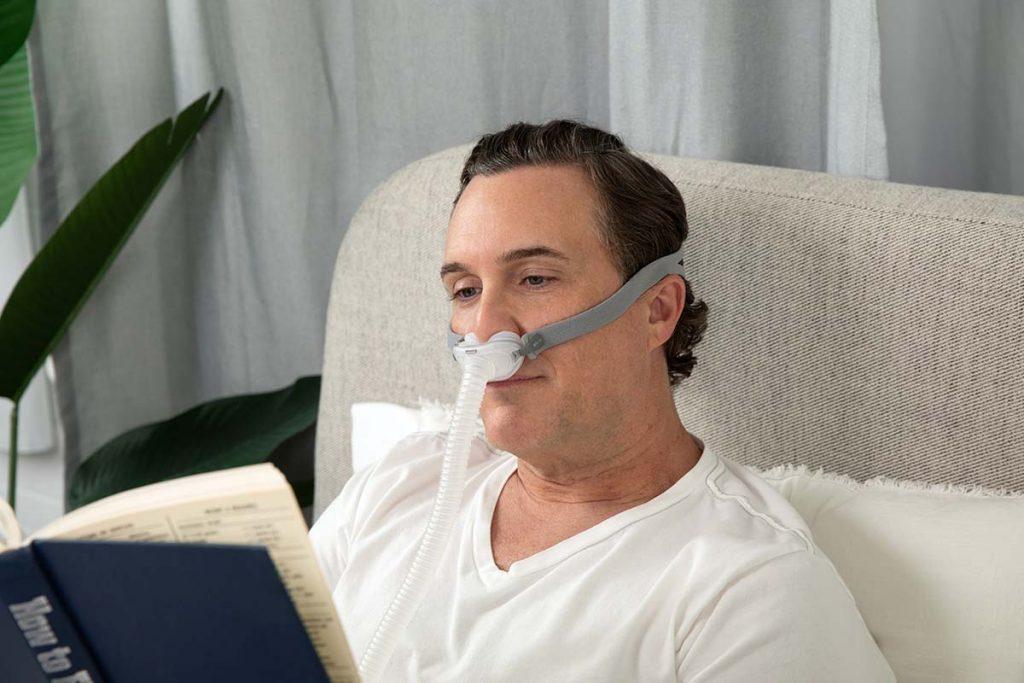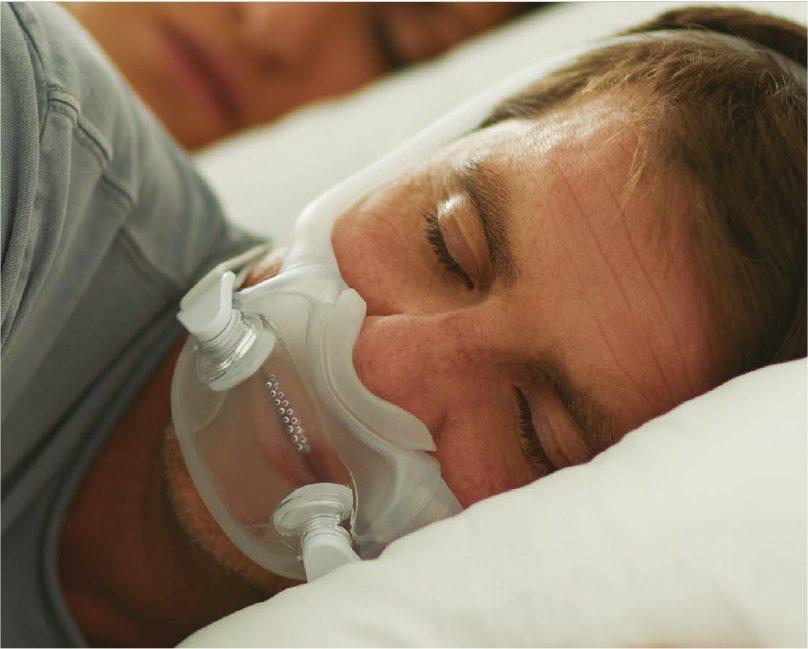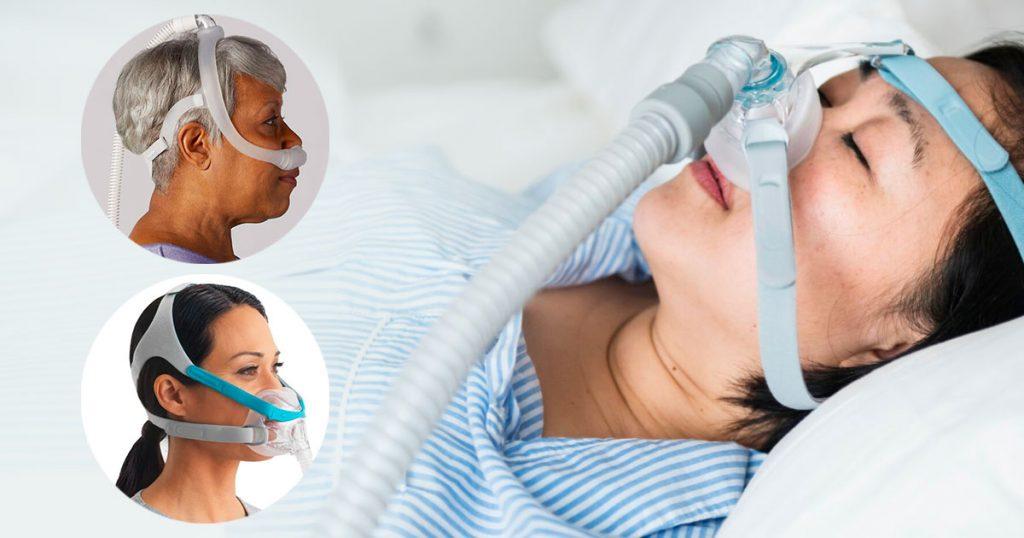Discovering the perfect CPAP mask stands out as a pivotal and crucial aspect of the entire CPAP routine. Indeed, securing a mask that combines comfort with an effective seal has the potential to significantly impact your success in CPAP therapy. Below, we present a concise and insightful overview regarding the differences between a nasal mask vs. a nasal pillow, giving you an idea of what each has to offer.
What is a nasal pillow?
Nasal pillows are a type of nose-only CPAP pillow with soft cushions adept at sealing around the nostril base, firmly secured by a flexible strap encircling the back of the head. This particular mask option stands out as the least intrusive among the available choices.
Who is a nasal pillow designed for?
- Individuals who predominantly breathe through their noses.
- Ideal for those experiencing claustrophobia, it offers minimal facial contact and preserves an unobstructed view.
- Suitable for individuals who enjoy reading or watching TV in bed before bedtime.
- It is effective for those with abundant facial hair, as it avoids issues that may arise with other mask types, ensuring a proper seal with the skin.
- It is well-suited for active sleepers, as it tends to stay in place more securely during periods of tossing and turning.
Who shouldn’t be using a nasal pillow?
- Experiencing discomfort may arise if your CPAP pressure is exceptionally high, as a substantial volume of air flows through comparatively small openings.
- Individuals grappling with nasal congestion or allergies, which pose challenges to breathing through the nose, may encounter difficulties.
- For those who habitually breathe through their mouths, exploring the use of a chin strap could be a viable solution.

What is a full-face mask?
A complete facial mask rests on the face, encompassing both the mouth and nose entirely. This is the quintessential CPAP mask that typically comes to mind for most individuals when thinking about such devices. Despite contemporary designs being considerably more compact than their predecessors, this variant still provides the most extensive coverage of the facial area among all mask types.
Who is a full-face mask designed for?
- Individuals who breathe through their mouths find full-face masks particularly beneficial.
- For those grappling with nasal congestion, it’s noteworthy that certain CPAP users opt for a full-face mask specifically during periods of cold or seasonal allergies, utilizing a nasal mask during the remaining months.
- This mask is effective for individuals requiring high pressure settings, as it enhances the tolerability of elevated pressures.
- Those with claustrophobia may gravitate towards this mask, given its limited contact with the exterior of the face.
- Several studies suggest that full-face masks are especially advantageous for bilevel or BiPAP users, as they are more susceptible to mouth leaks (reference provided at the end of the post).
What to consider before opting for a full-face mask
- May exhibit increased leakage issues due to its larger surface area, potentially leading to dry eyes.
- Engaging in activities like reading, watching TV, or wearing glasses in bed becomes challenging when using this particular mask.
- Sleeping on your stomach proves to be almost impractical with the constraints imposed by this mask.

CPAP Nasal Pillows vs. Nasal Masks: Which is More Expensive?
Patients paying in cash will notice significant price variations among different masks, influenced by factors such as style, manufacturer, and the specific provider. When your insurance covers your CPAP supplies, it acknowledges only two distinct mask types. Moreover, each mask involves the regular replacement of cushions, which is crucial for ensuring optimal usage. Initial acquisition of the mask typically includes one cushion (or set), with subsequent orders required for replacement cushions.
- Nasal and nasal pillow masks: Insurance treats these items equivalently. The Common Procedural Technology (CPT) code for both mask types is A7034, with in-network provider reimbursement varying between $45 and $125 per mask. The CPT code for nasal mask replacement cushions is A7032, while for nasal pillow masks, it’s A7033. Reimbursements for these cushions fluctuate from $10 to $35 each. Generally, most insurance plans adhere to Medicare standards, which include mask replacement every three months and cushion replacement twice a month, though some insurers may limit their coverage to only one additional cushion per month.
- Full-face masks: The Common Procedural Technology (CPT) code assigned to a full-face mask is A7030, with its reimbursement spanning from $70 to $180. For the replacement cushion of the full-face mask, the CPT code is A7031, and the reimbursement typically falls between $25 and $50 each. According to Medicare guidelines, replacement of this mask is suggested every three months; however, most insurance plans tend to cover the cost of one full-face mask every six months and the cushion on a monthly basis.
Choose Between a Nasal Mask and a Nasal Pillow for Better Sleep
Take control of your CPAP therapy journey today! With this comprehensive guide, you’re now equipped to make informed decisions about the best mask type for your unique needs. Remember, the right choice can dramatically enhance your comfort and the effectiveness of your treatment. Consult your healthcare provider, evaluate your personal preferences and lifestyle, and select the mask that promises you the most restful and rejuvenating sleep experience. Embrace the change for better sleep and better health—your journey to improved wellbeing with CPAP therapy starts now!
